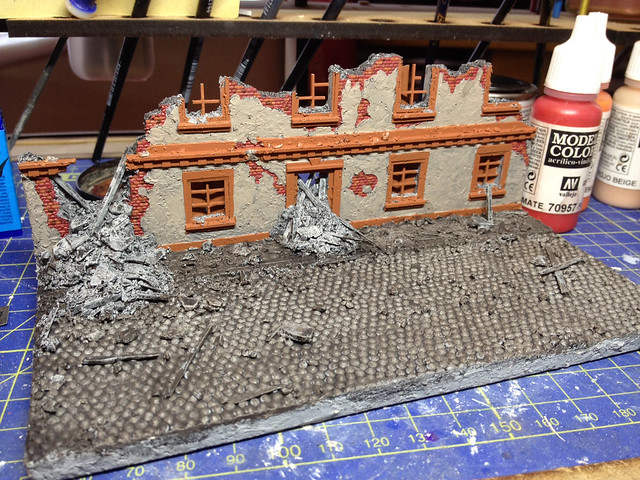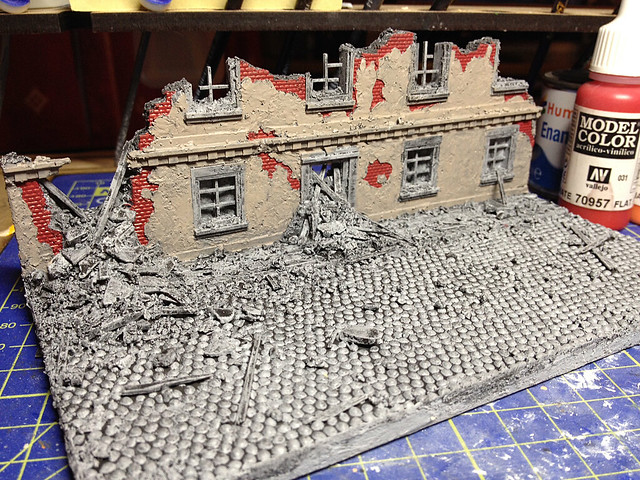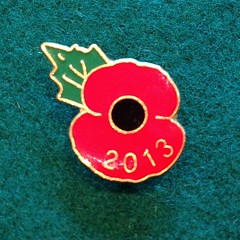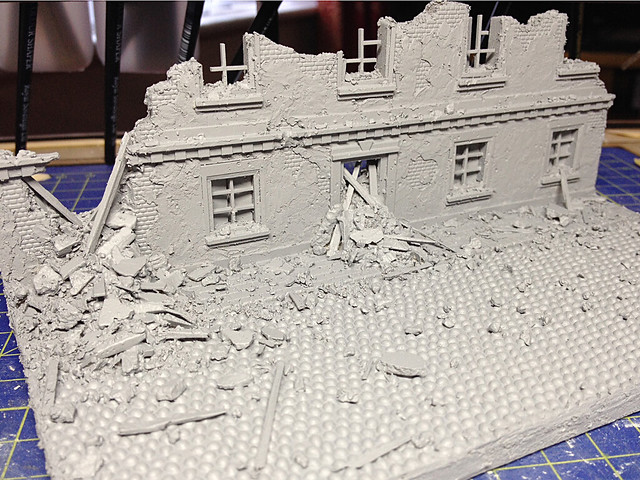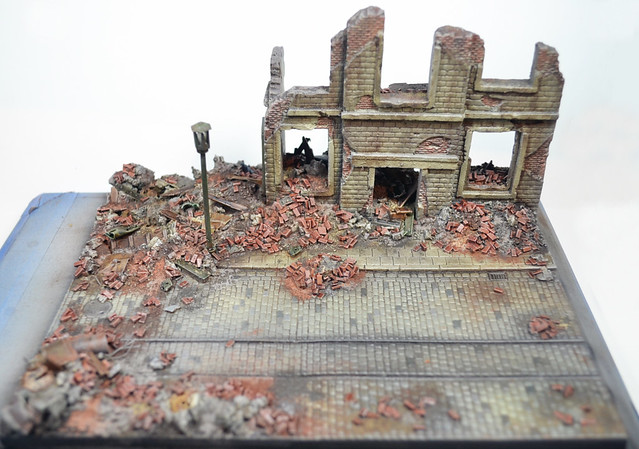 |
| Mr Dyzio's attention to detail is fantastic |
Interestingly, the section of his scene that put's my novice efforts most to shame is the area of my back-drop which I knew from the start that I was skimping on with regards to planning and detail - the street.
You may remember, if you have had the endurance to have followed the progress of my project, that I mentioned how this first diorama was just an experiment with techniques and I wasn't going to get caught up with the fine detailing. Unfortunately it is exactly this attention to detail - the type of cobbles used, the manhole covers and drain gratings and the tram lines - that marks the level of quality between myself and an expert modeller like Mr Dyzio.
I'm being self-deprecating or negative when I say that, we are just at different stages in our modelling careers so it's actually interesting to compare how we both tackled a similar subject. It's very useful for me to acknowledge how I could have 'done things better' and have such a good example of how I might have improved my diorama - I will take these lessons forward to my next project.
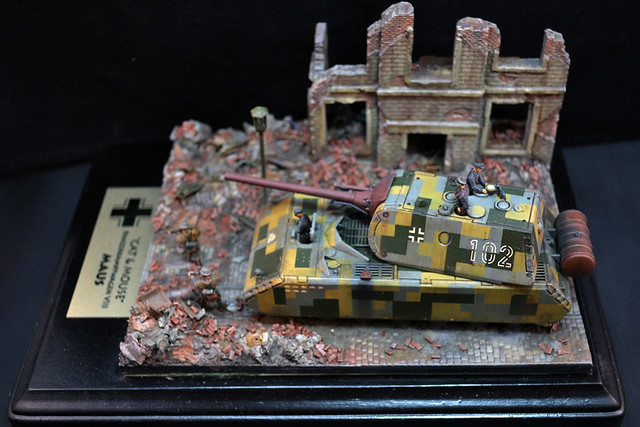 |
| Mr Dyzio'z completed 'Mouse' vignette - wonderful! |
So, many thanks to Mr Dyzio for the constructive assistance, it is very gratefully received. Please do check out his completed 'Cat & Mouse' diorama over at his blog: Dyzio Scale Models - 1/72 MAUS Dragon - Completed

